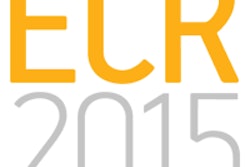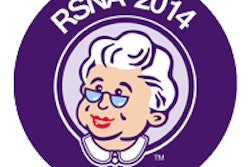By reducing recalls and catching breast cancer earlier, digital breast tomosynthesis (DBT) could yield hundreds of millions of dollars in U.S. healthcare cost savings if it were added to mammography for annual breast cancer screening, according to a new study conducted by Truven Health Analytics.
The research team, led by Machaon Bonafede, PhD, estimated the financial impact of using DBT along with digital mammography for annual screening in a hypothetical U.S. managed care plan with 1 million members. Despite an initial extra cost for DBT, use of the technology would result in overall savings of $2.4 million per year for the plan, the group found.
Taken a step further, the results suggest that DBT could lead to as much as half a billion dollars in annual savings if it were used for the approximately 19 million screening mammograms performed annually in the U.S., according to the researchers.
The cost savings would come as a direct result of DBT's clinical benefits, such as reduced recalls and follow-up procedures, as well as earlier breast cancer detection, they wrote. The study was published online January 12 in ClinicoEconomics and Outcomes Research.
Bonafede and colleagues from Truven, Yale University, and the University of Iowa developed an economic model that included two screening scenarios: digital mammography alone or digital mammography in combination with tomosynthesis. Data for the model were taken from published literature and from an analysis of two Truven research databases from 2010 to 2012.
"The scenarios are hypothetical, but the underlying data are very much real and generalizable to commercially insured women in the U.S. health system," corresponding author Jeffrey Miller told AuntMinnie.com via email. "In fact, the data are a key strength of our study. Data for our model came from carefully designed and conducted analyses of the Truven Health Analytics MarketScan research databases, which cover over 30 million patients per year who are covered by a variety of employer-sponsored private health insurance plans and employer-paid Medicare supplemental insurance."
From the claims database analyses, Bonafede's group estimated digital mammography screening cost to be $192.50. A CPT code for DBT had been announced by the U.S. Centers for Medicare and Medicaid Services (CMS) at the time of the study, but a rate had not been established; the researchers projected an additional $50 for DBT reimbursement, bringing the screening total to $242.50.
"For a long time it was anticipated that the DBT reimbursement amount would be around $50, and there was anecdotal evidence that the amount being charged by institutions offering a self-pay DBT option to patients was about that much," Miller said. "And it turned out that on October 31, CMS issued a ruling for 3D mammography calling for reimbursement of $57 for Medicare and Medicaid patients starting January 1, 2015."
The study's base-case analysis included 84,549 women in a 1 million member health plan. The women were between the ages of 40 and 75 and would undergo mammography screening each year. (This number was derived by calculating the percentage of women in this age group in the total health plan, and then calculating the percentage of these eligible women who undergo mammography screening in any given year.)
The researchers estimated the rate of follow-up services after digital mammography alone to be 15%; they estimated that the follow-up rate after digital mammography with tomosynthesis would be closer to the American College of Radiology (ACR) and Agency for Healthcare Research and Quality (AHRQ) benchmark of 10%.
| DBT value analysis | |||||
| Base-case analysis | |||||
| No. of patients using follow-up services | |||||
| Full-field ditigal mammography (FFDM) | 12,978 | ||||
| FFDM + DBT | 8,455 | ||||
| Difference | 4,523 | ||||
| Total costs | |||||
| FFDM | $54.6 million | ||||
| FFDM + DBT | $52.2 million | ||||
| Difference | $2.4 million | ||||
| Additional DBT expense | -$4.2 million | ||||
| Savings due to reduction of follow-ups | $5.4 million | ||||
| Savings due to earlier cancer detection | $1.2 million | ||||
Substantial savings
The overall benefit of DBT was $78.53 per woman screened, Bonafede and colleagues calculated; after adjusting for the hypothetical $50 additional cost of the DBT exam, the savings per woman screened were $28.53. If the results are extrapolated to the U.S. population, the potential savings are substantial, according to the authors.
"Using a conservative estimate that one-half of the approximately 39 million mammograms performed annually in the U.S. are for screening ... then a crude extrapolation of our estimated per patient net cost savings of $28.53 suggests that use of DBT could account for over $550 million saved annually in U.S. breast cancer healthcare spending if DBT were reimbursed at a rate of $50 more than [digital mammography]," they wrote.
Not only would using DBT for annual breast cancer screening cut healthcare costs, it would also reduce what have been called the "harms" of mammography, such as false-positive mammograms -- not to mention costs such as co-payments, co-insurance, and deductibles, and indirect costs such as transportation, work absences, and childcare, Miller said.
"Our paper specifically focuses on direct healthcare cost, but we think that DBT's reduction in follow-up services and unnecessary testing and/or treatment could also have a substantial humanistic impact," he told AuntMinnie.com. "These humanistic consequences and other patient costs were outside the scope of our analysis, but we believe they are important contributors to the overall value of DBT."
The study addresses a particular knowledge gap regarding DBT, Miller said.
"The clinical advantages of DBT have been firmly established and are well-regarded, but before now, the real-world economic advantages were unclear or speculative at best," he said. "This is the first paper published on this topic, and it is particularly timely as DBT screening becomes more mainstream. We believe our study will set a precedent for future economic evaluations of DBT."
Study disclosures
Women's imaging vendor Hologic provided funding for the study.



















